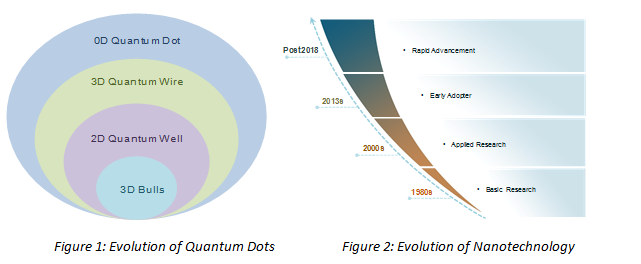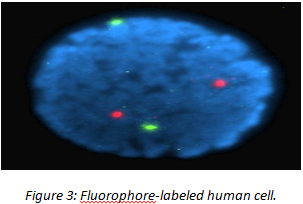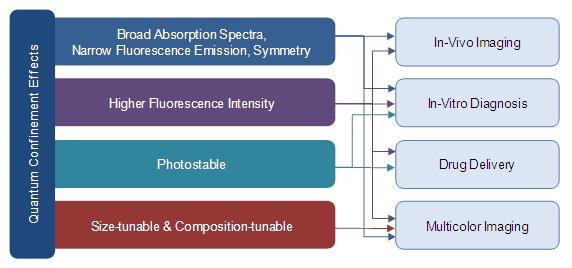QDs are semiconductor Nanocrystals that can be excited by a wide range of light, ranging from UV to near IR; and can emit different wavelengths of light, depending on their size and composition. Our market research analysis depicts that the overall market for QD technology is expected to grow from the $108.41 million that it accounts for, currently, in 2013 to $3,414.54 million in 2020, at a CAGR of 71.13% from 2014 to 2020.

QDs possess wide excitation spectra and narrow emission spectra. As QDs can be excited by one single wavelength and emit light of different wavelengths, they are perfect probes for multiplex imaging. Conventional organic dyes cannot be easily synthesized to emit different colours and have narrow excitation spectra and broad emission spectra that often cross into the red wavelengths, thereby making it difficult to use these dyes for multiplexing. In addition, QDs have exceptional photo stability. QDs, due to their intense brightness and resistance to photo-bleaching, are ideal for live cell imaging wherein cells must be kept under the excitation light source for long periods. Their extreme brightness also helps in single particle detection. By comparison, conventional dyes often photo-bleach, making longitudinal tracking difficult.

In conventional staining experiments, QDs are antibodies specific to target structures in cells. In comparison with organic fluorophores, QDs offer multiple advantages. For multi-colour staining, potentially more structures can be labeled simultaneously due to their narrow emission spectra and it is possible to excite all colours of fluorescence with one single excitation wavelength. Due to reduced photo bleaching, it is also easier to obtain 3D images. Another advantage is the enhanced fluorescence decay time. By making time-gated images, the background can be reduced. However, in this type of application, Quantum Dots have to be seen only as an alternative fluorescence dye. With the same idea, QD labeled DNA has been used as a marker for fluorescence in situ hybridization. Instead of labeling the whole cellular structures, individual molecules can be fluorescence-labeled with QDs. As such, it is possible to trace the movement of the individual membrane proteins. Single QDs can be brighter than single organic fluorophores and; therefore, it is relatively easy to observe single QDs.
Looking at the development in the healthcare industry for quantum dots specific application it is anticipated that Healthcare application is expected to be the major market share holder, with an expected CAGR of 52.85% from 2014 to 2020.
QDs can be used to trace cells in cell cultures. When cells are exposed to a solution of QDs, they start consuming them. When cells of different types get incubated with QDs of different colours before seeding them in a co-culture, the type of each cell can be identified later on, by its colour of fluorescence. Besides, the fate of particular cells within the cell or tissue cultures can be recognized by ‘fluorescence-labeling’ them with QDs. Since fluorescence-labeling is possible simply by incubating the cells with the QDs, researchers predict a significant impact of QDs in tracing the studies of cells. QDs have also been used for labeling of tissues in animals, and there is a possibility to use them as contrast agents in human beings.
The ways of labeling and visualizing DNA and protein molecules at present, depends on the light-emitting properties of a limited group of radioactive elements, chemical dyes, and protein molecules. These labeling techniques have several drawbacks; like: radioactive markers have limited life spans, while organic dyes come with a limited number of colours and quickly lose their glow. Hence certainly QDs are going to bring in technological advancement in this regard.


